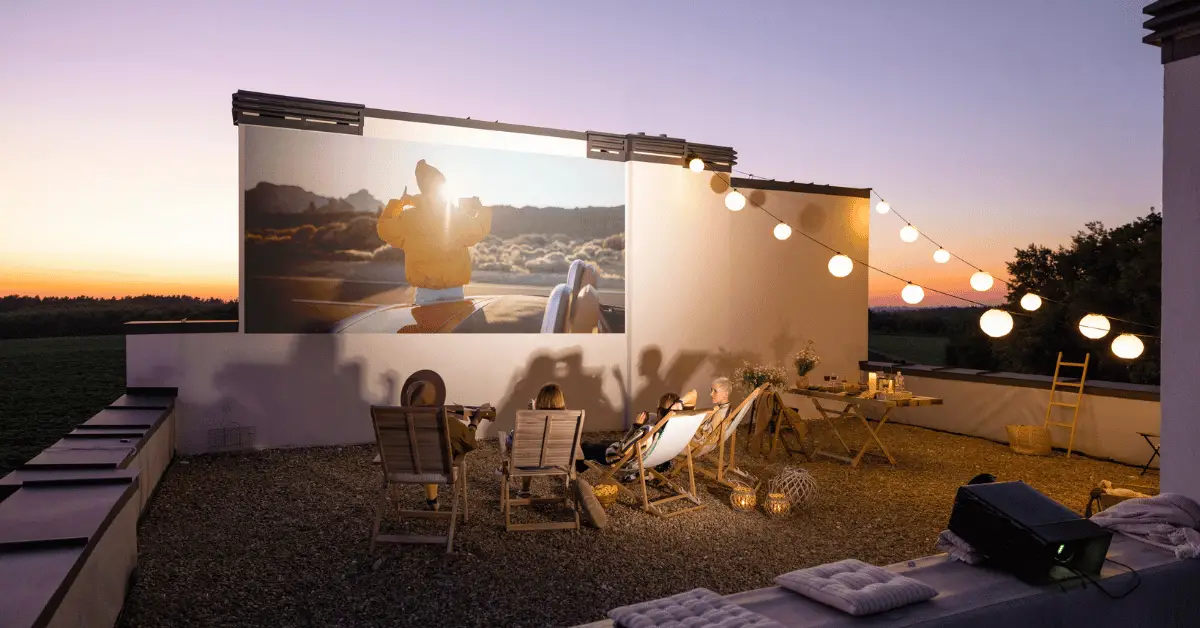When it comes to projectors, one of the most important factors to consider is the aspect ratio of the projected image. The aspect ratio determines the shape of the image, and can have a significant impact on the viewing experience. While 16:9 is the most common aspect ratio for modern projectors, there are other options to consider, such as 4:3, 16:10, and even ultra-wide formats. In this article, we will explore the different aspect ratios available for projectors, and discuss the pros and cons of each. We will also provide tips on how to choose the right aspect ratio for your specific needs, whether you are using the projector for business presentations, home theater, or gaming.
Table of Contents
Aspect Ratio versus Projector Resolution
Aspect Ratio versus Projector Resolution: Understanding the Difference and Making the Right Choice
When shopping for a projector, two key specifications to consider are aspect ratio and resolution. While these terms are often used interchangeably, they actually refer to different aspects of image quality. In this article, we will explore the difference between aspect ratio and resolution, and discuss how to choose the right combination for your specific needs.
Aspect Ratio Explained
Aspect ratio refers to the relationship between the width and height of an image. It is expressed as a ratio of two numbers, such as 4:3, 16:9, or 16:10. The first number represents the width of the image, while the second number represents the height. For example, a 16:9 aspect ratio means that the image is 16 units wide for every 9 units of height.
Aspect ratio can have a significant impact on the viewing experience, as it determines the shape of the image. A wider aspect ratio, such as 16:9, is well-suited for watching movies or playing games, as it provides a more immersive experience. A more square aspect ratio, such as 4:3, is often preferred for business presentations or displaying text, as it allows for more vertical space.
Resolution Explained
Resolution refers to the number of pixels that make up an image. It is expressed as two numbers, such as 1920 x 1080 or 1280 x 800. The first number represents the horizontal pixel count, while the second number represents the vertical pixel count.
Higher resolution generally means a sharper and more detailed image, but it can also require more processing power and a higher-quality projector to display properly. Lower resolution may result in a slightly softer or fuzzier image, but can be more affordable and easier to set up.
Aspect Ratio versus Resolution: Making the Right Choice
When choosing a projector, it is important to consider both aspect ratio and resolution. The ideal combination will depend on the intended use of the projector.
For example, a business projector may require a 4:3 aspect ratio to display presentations and documents, but may not need the highest resolution. On the other hand, a home theater projector may benefit from a wider 16:9 aspect ratio and a higher resolution, to provide a more immersive and cinematic experience.
It is worth noting that some projectors may have limitations on aspect ratio and resolution. For example, a projector with a native resolution of 1280 x 800 may not be able to display a full 1080p image without scaling, which can result in a loss of image quality.
In general, it is recommended to choose a projector with a native resolution that matches the intended use, and an aspect ratio that suits the content being displayed. It is also important to consider other factors, such as brightness, contrast ratio, and color accuracy, to ensure the best possible image quality.
In conclusion, aspect ratio and resolution are two key factors to consider when choosing a projector. While aspect ratio refers to the shape of the image, resolution refers to the number of pixels that make up the image. The ideal combination will depend on the intended use of the projector, and may be influenced by other factors such as brightness, contrast ratio, and color accuracy. By taking these factors into consideration, you can choose a projector that meets your specific needs and delivers the best possible image quality.
What is an example of a common aspect ratio?
A common aspect ratio for modern projectors is 16:9. This aspect ratio is often referred to as “widescreen” or “high-definition,” and is widely used for movies, TV shows, and video games. The 16:9 aspect ratio provides a wide and immersive image, which is ideal for cinematic content and gaming. Many modern projectors are designed to display a 16:9 aspect ratio natively, which means that the projector’s physical display panels are optimized for this aspect ratio. However, it is worth noting that other aspect ratios, such as 4:3 or 16:10, are still in use and may be preferred for certain types of content or applications.
Conclusion
In conclusion, the 16:9 aspect ratio is a common and popular choice for modern projectors. This widescreen aspect ratio provides a wide and immersive image, which is ideal for cinematic content and gaming. However, other aspect ratios such as 4:3 or 16:10 are still in use and may be preferred for certain types of content or applications. When choosing an aspect ratio for your projector, it is important to consider the type of content you will be displaying and the intended use of the projector. By taking these factors into account, you can choose an aspect ratio that provides the best possible viewing experience for your specific needs.

